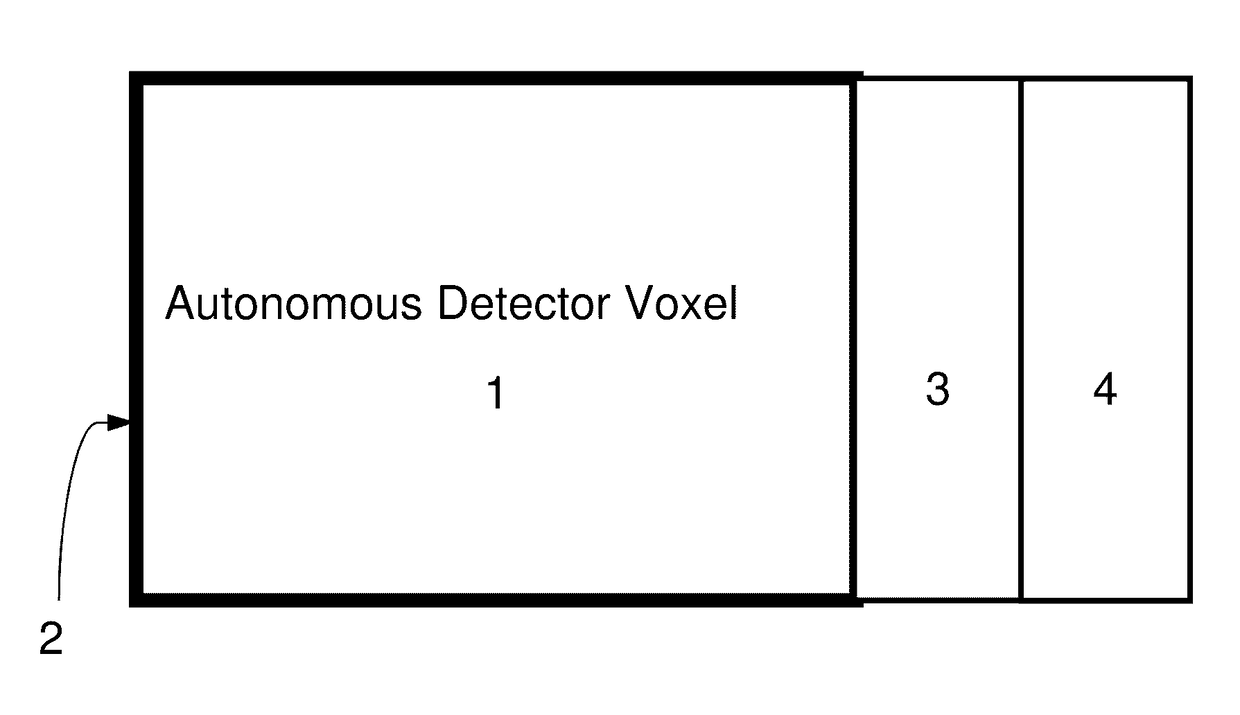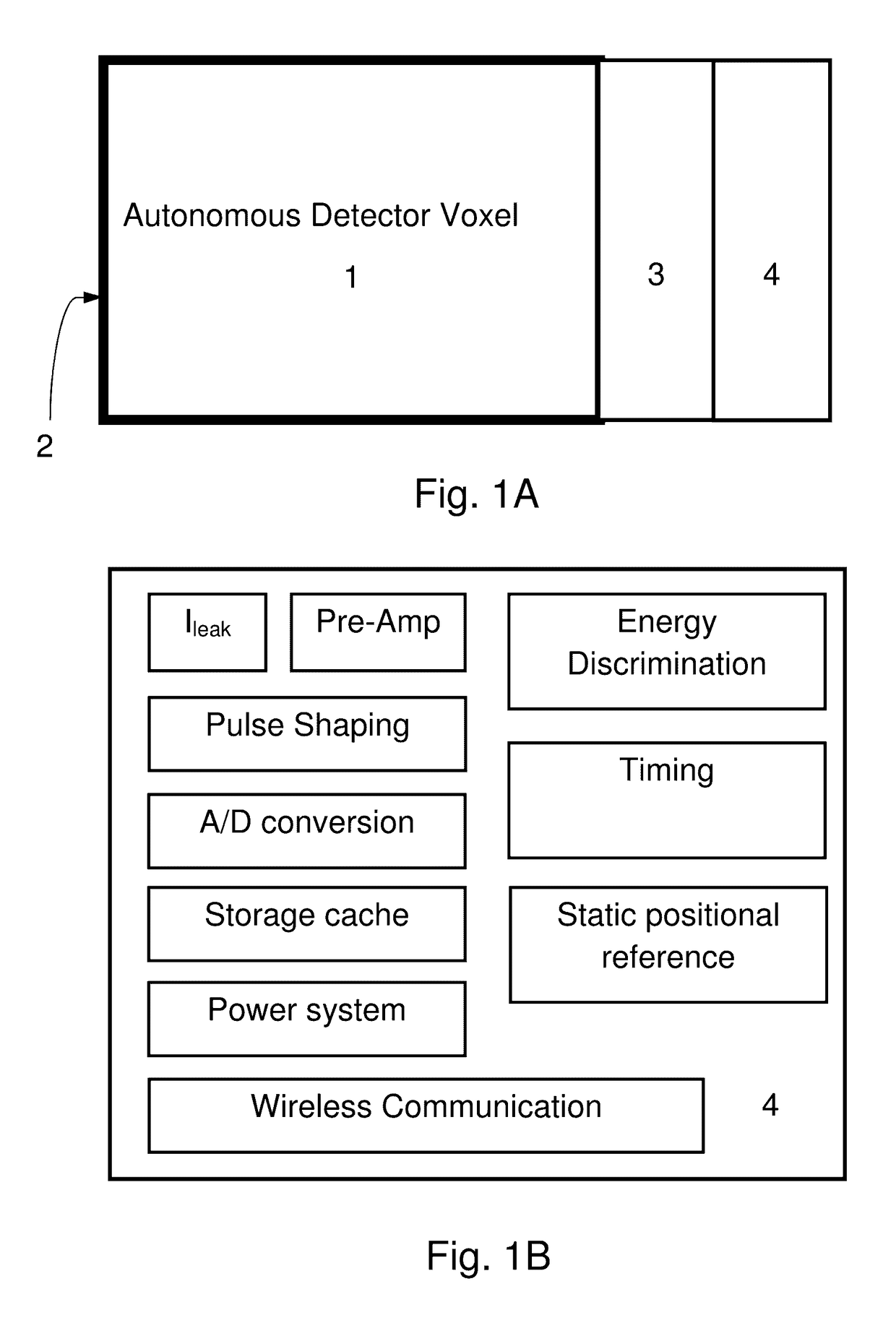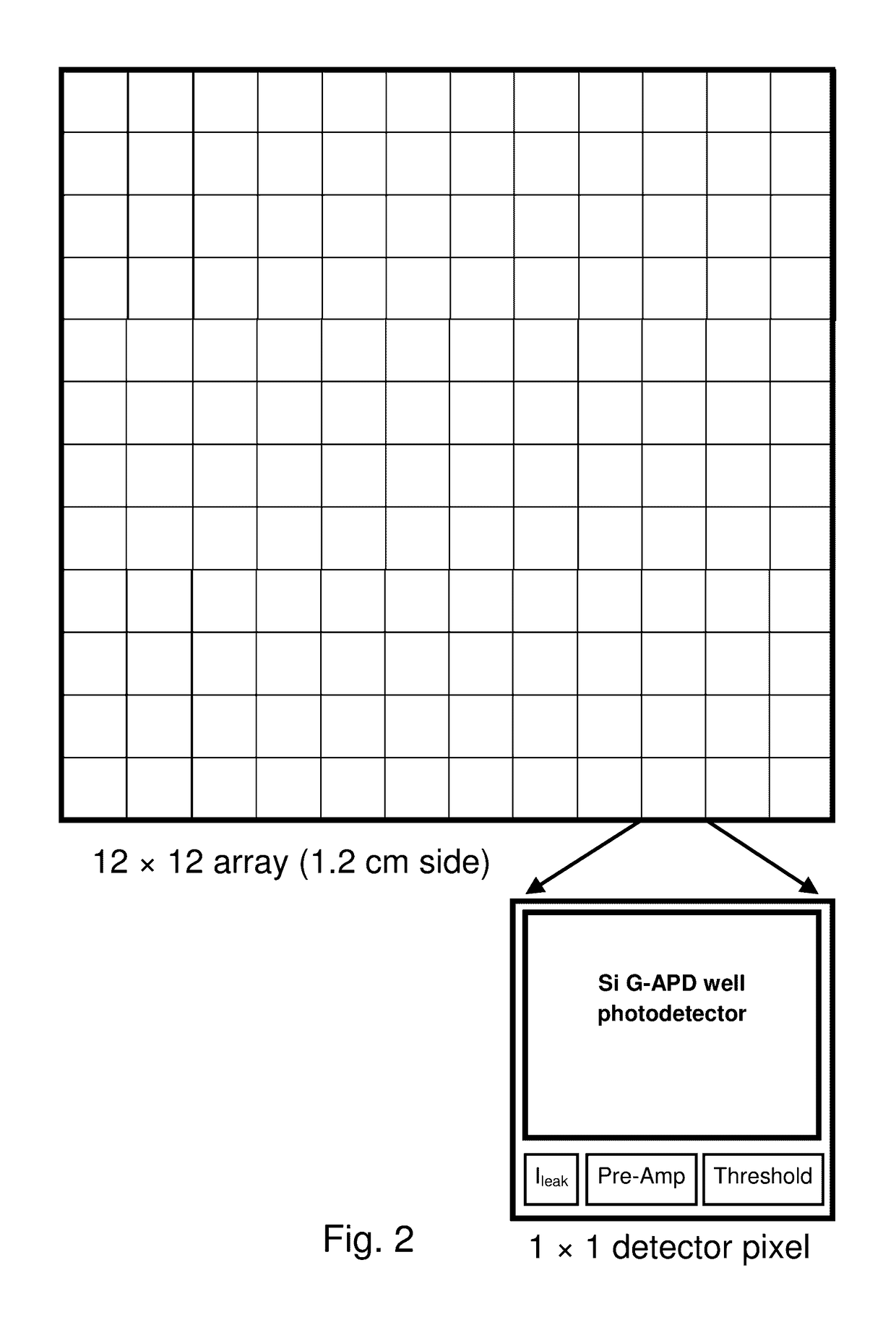Autonomous gamma, X-ray, and particle detector
- Summary
- Abstract
- Description
- Claims
- Application Information
AI Technical Summary
Benefits of technology
Problems solved by technology
Method used
Image
Examples
Embodiment Construction
[0090]The system level technology includes both fabrication of autonomous detector voxels (ADVs) containing thin-film scintillation photon detector (e.g. Geiger mode avalanche photodiode, G-APD) with suitable electronics integrated with appropriate scintillator volume and the integration of these ADVs into autonomous detector arrays (ADAs) or autonomous detector blocks (ADBs) and assembling them into top-system level PET scanner with desired shape and providing the full functionality with desired spatial, temporal and energy resolution and uniformity.
[0091]Autonomous Detector Voxel (ADV):
[0092]The ADV is comprised of a scintillator, one or more coupled electronics module(s), optically reflecting and isolating surface layers, and electrically isolating coatings. The detection and processing electronics are coupled to or fabricated onto one or more of the scintillator surfaces. The detection electronics contain everything necessary to detect and transmit the data of a scintillation ev...
PUM
 Login to View More
Login to View More Abstract
Description
Claims
Application Information
 Login to View More
Login to View More - R&D
- Intellectual Property
- Life Sciences
- Materials
- Tech Scout
- Unparalleled Data Quality
- Higher Quality Content
- 60% Fewer Hallucinations
Browse by: Latest US Patents, China's latest patents, Technical Efficacy Thesaurus, Application Domain, Technology Topic, Popular Technical Reports.
© 2025 PatSnap. All rights reserved.Legal|Privacy policy|Modern Slavery Act Transparency Statement|Sitemap|About US| Contact US: help@patsnap.com



